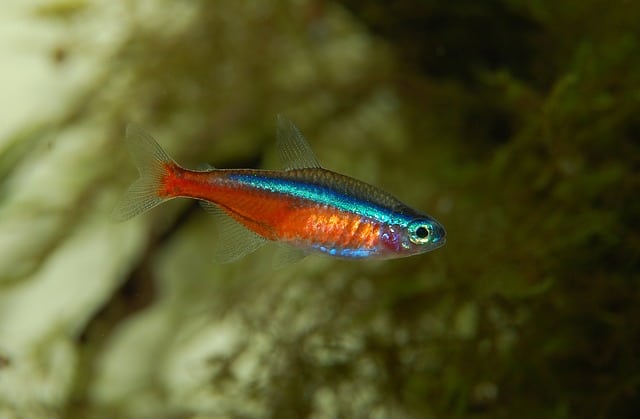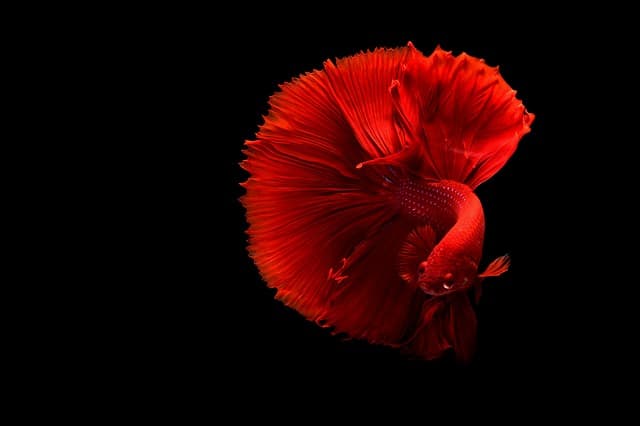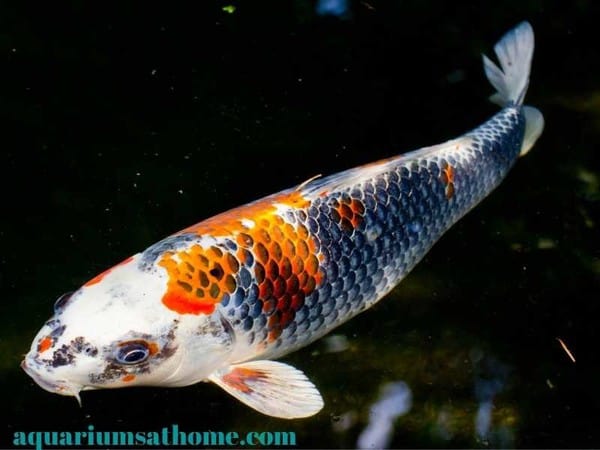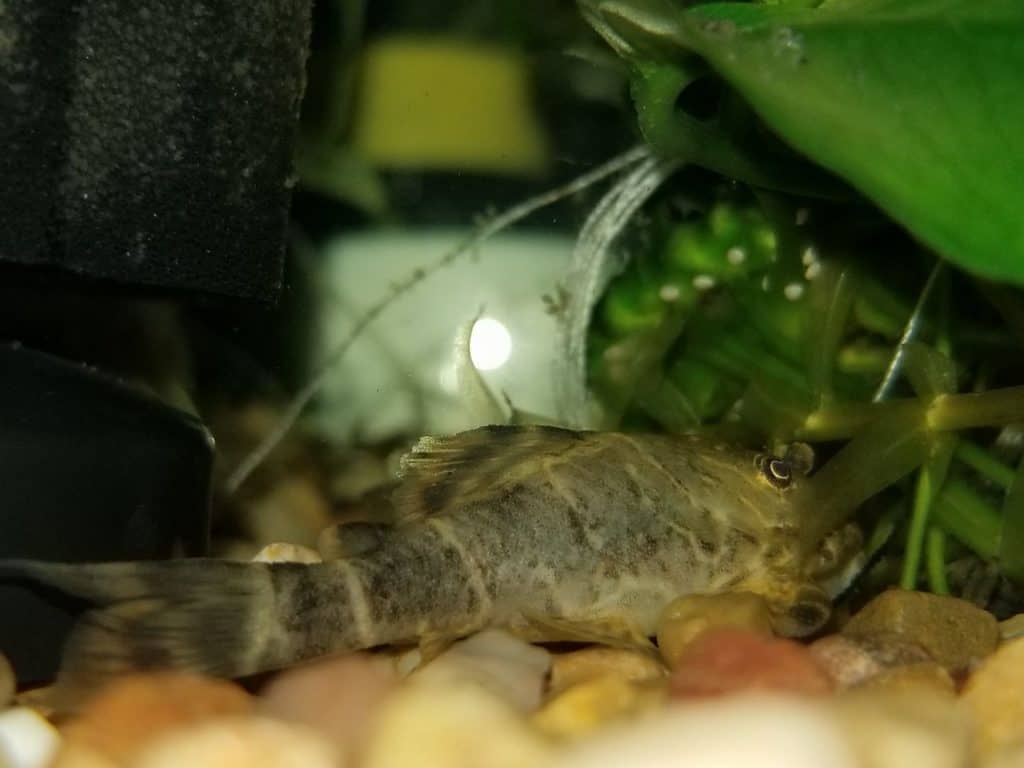Betta fish are a popular choice for many freshwater aquarium hobbyists. Since these fish have an innate ability to survive in shallow water, they’re a great choice for a small aquarium and require little in way of care or maintenance. Perhaps you’re thinking about keeping betta fish and are wondering if they prefer long or tall tanks? Well, I have the answer for you below:
Betta fish prefer a long tank as it more closely resembles their natural habitat. In the wild, bettas live in warm, shallow water like stagnant ponds and slow-moving streams. They like to move left and right (instead of up and down) in their aquatic environment. A tall or deep tank provides less space for bettas to swim and explore, which can stunt their growth and affect their health.
Now that you know betta fish do well in long rather than tall tank, let’s take a closer look at this further and in more detail in this article. I’ll discuss what tank size is best for betta fish, whether (or not) bettas can survive in a tall tank, and what type of fish are good for tall tanks. I’ll even give you some tips on how to properly maintain your betta fish aquarium.
So, if you’re ready to learn more about keeping and properly caring for bettas, then let’s get to it!
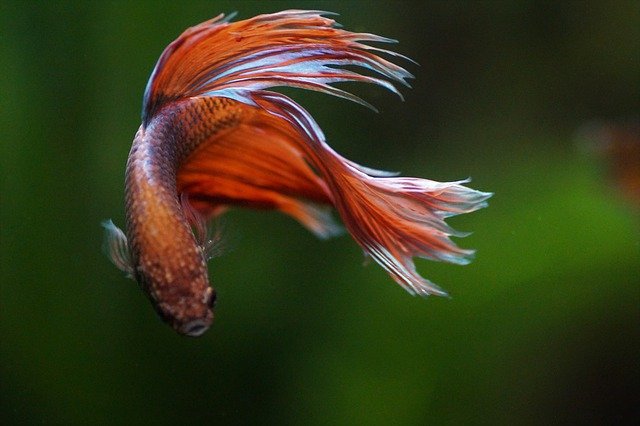
Can Bettas Live in Tall Tanks?
While bettas can live in a tall tank, it’s not recommended. They come from Asia where they thrive in shallow waters such as rice paddies, stagnant ponds, and slow-moving streams. Their instinct is to swim vertically. The only time they’ll swim horizontally is when they surface to breathe air and that’s only if the water is polluted or oxygen depleted.
In time, bettas will become accustomed to a tall tank, but it’ll be harder for them to adjust, especially if they’re ‘fresh from the cup’ or living in a tiny fishbowl at the pet store, in other words! If a tall, deep tank is your preference, you’re better off keeping a different species of fish like angels or discus. For more information, please see below under the subheading entitled: What Fish are Good for Tall Tanks?
What is the Best Size Tank for Bettas?
When it comes to betta fish, bigger may be better (though not always necessary) regarding tank size! Their natural habitat consists of warm, shallow water which is why they can do quite well in a smaller aquarium. A 10-gallon tank that’s heated to at least 75 degrees Fahrenheit (or 24 degreed Celsius) is good for 3 betta fish – 1 male and 2 females.
A longer rather than taller tank is what you’re after, since betta fish prefer to swim horizontally rather than vertically. If you plan to keep any more than 3, you must invest in a larger aquarium that holds at least 20 gallons of water. A group of 5 (1 male and 4 females or all females), for example, can thrive in a heavily planted 20-gallon tank.
Are 5-Gallon Tanks Bad for Bettas?
A 5-gallon tank is only good for 1 betta fish. While bigger is often better if you intend to keep more than 1 betta, a 5-gallon aquarium is large enough for 1 fish to have adequate room for swimming. Regardless of its small size, you must still maintain the tank by doing regular water changes, pruning any live plants, vacuuming up waste from the substrate, and cleaning algae off the fake plants or decorations.
Is it Cruel to Keep Bettas in a Small Tank?
Since betta fish thrive in shallow water, a small tank of 10 gallons is okay. The problem arises when they share an aquarium with fish they deem as rivals. In a small tank, they are confined and may feel stressed if unable to ‘escape’ other fish. Other issues that may arise from being kept in too small a tank include illness caused by micro bacterial infections, stunted growth, and a reduced life span.
Why are Bettas Kept in Cups?
The reason bettas are kept in cups at chain stores is to showcase their color patterns. They shouldn’t be kept in them for long, however, as it is (in my opinion) cruel to confine them to such a small space where they can’t swim freely. Good pet shops will opt to keep them in fishbowls instead. The bottom line is that bettas should never be kept in anything smaller than a 5-gallon aquarium.
What Fish are Good for Tall Tanks?
The best type of fish for tall tanks are those that prefer deeper water and like to swim horizontally. Angelfish and discus’, for example, are ideal. Keep in mind, however, that they’re both shoaling fish, meaning they like to be kept in groups and will swim together in the same direction in a coordinated fashion. Therefore, the tank must be quite large – at least 55 gallons or bigger!
Other fish that like tall tanks include seahorses, shrimpfish, lionfish, and opahs. Headstanders, which are a type of South American tetra, got their name from their vertical swimming ability. They have the habit of moving through the water at 45-degree angle with their heads pointing downward. This make them look as if they’re ‘standing on their heads’.
Do Bettas Like the Top of the Tank?
While bettas usually prefer the middle of the tank, they will occasionally come to the top to breathe air. They like to swim horizontally so if you notice them frequently swimming vertically up near the surface, this could indicate a problem.
The water may be toxic and polluted with high levels of ammonia, nitrite, or CO2. Or it could be oxygen depleted. In either case, a partial water change and/or filter replacement is necessary. Otherwise, you risk your fish getting ill or possibly dying.

How Do You Maintain a Betta Fish Tank?
Maintaining your betta tank is the key to healthy, happy fish. If you intent to have more than 1, then keeping them in a long, planted aquarium that holds at least 10 gallons of water is recommended. The most important things to keep in mind include the following:
- Never let the temperature fall below 68 degrees Fahrenheit (20 degrees Celsius) or go rise above 82 degrees Fahrenheit (28 degrees Celsius) – the ideal temperature range is between 76 degrees Fahrenheit (25 degrees Celsius) and 79 degrees Fahrenheit (26 degrees Celsius).
- Maintain a pH level that’s slightly acidic (between 6.5 and 7.5) and test it every other week.
- Do regular partial water changes (15 to 25 per cent in a filtered tank or 30 to 50 per cent in an unfiltered tank) every week to maintain good water conditions.
- Replace the filter media once a month and rinse out the housing as well.
- Wipe down the tank walls, decorations, and fake plants once a week to remove excess algae.
- Vacuum the gravel or substrate once every other week to remove any waste or uneaten food.
- Prune live plants once a month and add an aquarium-plant fertilizer as per the manufacturer’s instructions.
- Don’t keep more than 1 male in the tank. Betta fish are naturally aggressive and territorial. They’re not schooling fish and males will often fight each other for dominance – hence the term Siamese Fighting Fish. For a 10-gallon tank, keep 1 male and 2 females.
Conclusion
To conclude, betta fish in the wild thrive in warm, shallow waters such as those of stagnant ponds and slow-moving streams. Long tanks are better than tall ones, as they more closely resemble their natural habitat. Bettas like to swim horizontally (not vertically), which is why long tanks are recommended. They provide adequate space for the fish to swim about freely and explore their environment.
Hopefully, this article has been of help to you. Thanks for reading and good luck with your betta fish aquarium.
Related Posts
Can fin rot kill a betta fish [what you can do to help]
How Much Should You Feed a Betta Fish?
What Fish can Live with Bettas?
What Freshwater Aquarium Fish Like Soft Water?
An Easy Fix For Aquarium Currents Too Strong For Betta Fish
Best Live Plants for a Betta Fish Tank



